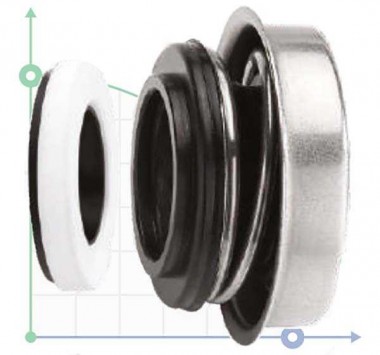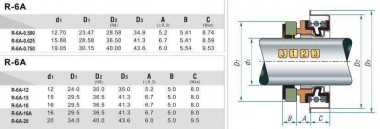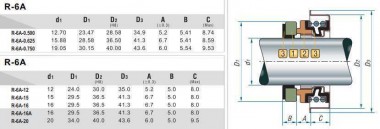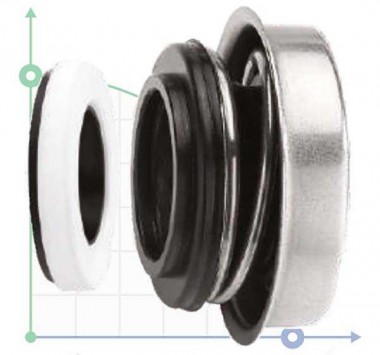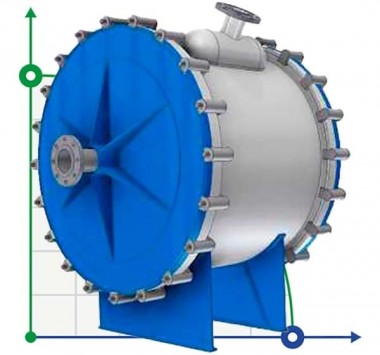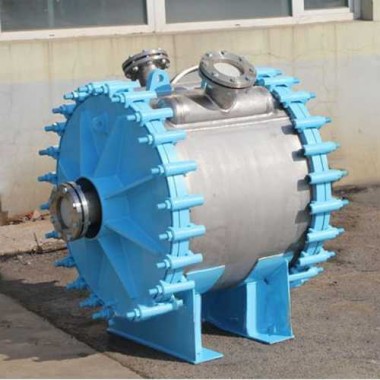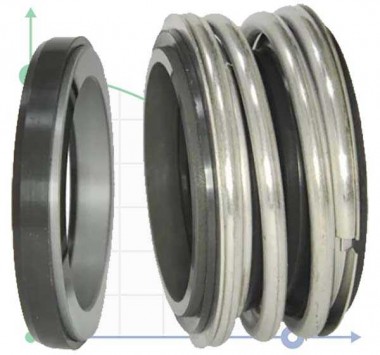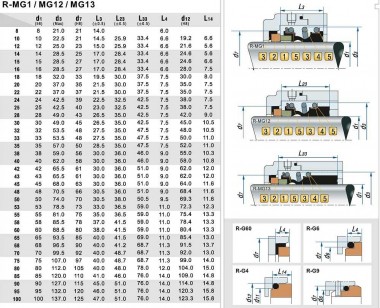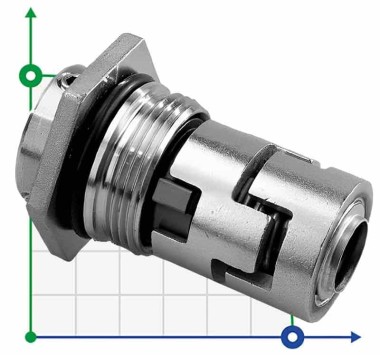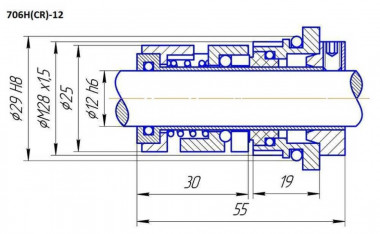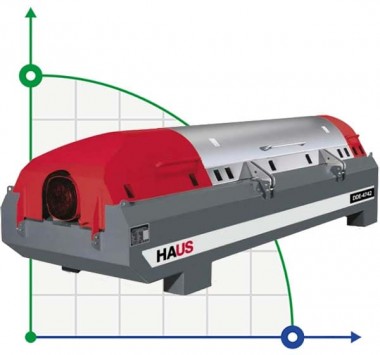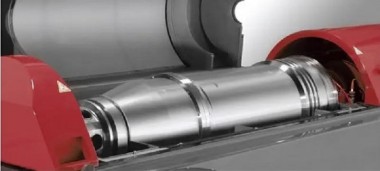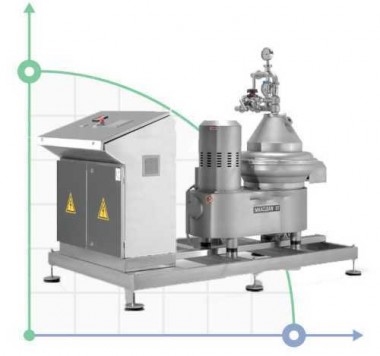Mechanical seal R-6A

Mechanical seal R-6A
Temperature: -20°~100°
Pressure: ≤0.3 MPa
Speed: ≤5000 r/min
Materials
- Rotating ring: Ceramic/SIC.
- Stationary ring: Ceramic/SIC.
- Bellows: NBR/HNBR.
- Spring: SS304 / SS316.
- Metal parts: SS304 / SS316.

| d1 (H6) | D1 (Max) | D2 (h8) | D3 (±0.5) | A | B | C | |
| 0.500 | 12,70 | 23,47 | 28,58 | 34,9 | 5,2 | 5,41 | 8,74 |
| 0.625 | 15,88 | 28,58 | 36,50 | 41,3 | 6,7 | 5,41 | 8,59 |
| 0.750 | 19,05 | 30,15 | 40,00 | 43,6 | 6.0 | 5,54 | 9,53 |
| d1 (H6) | D1 (Max) | D2 (h8) | D3 (±0.5) | A | B | C |
| 12 | 24 | 30,0 | 35,0 | 5,2 | 5,0 | 8,0 |
| 15 | 29,5 | 36,5 | 41,3 | 6,7 | 5,0 | 8,0 |
| 16 | 29,5 | 36,5 | 41,3 | 6,7 | 5,0 | 8,0 |
| 20 | 34,0 | 40,0 | 43,6 | 6,0 | 5,0 | 9,5 |
Hydroponics

Dosing control stations for hydroponic systems Hydroponics is a method of growing plants in artificial environments without soil. Plant nutrition is obtained from a nutrient solution prepared from nutrients by dosing with pumps of one or another substance and nutrients. Hydroponics allows you to regulate the growing conditions of plants - to create a nutrition regime that fully meets the needs of plants in nutrients.Dosing control stations for hydroponic systems The root system of plants when grown hydroponically grows on solid substrates that have no nutritional value, in water or in humid air aeroponics. An example of an organic substrate is coconut fiber: it is ground coconut shell and bast from which iron and magnesium salts are washed. In its natural environment, coconut fiber serves as the initial soil for the roots of a newborn palm. Coconut fiber is lighter than water, therefore, when watering, it does not sink like soil, but swells, filling with air. Each fiber contains a large number of pores and tubules in its thickness. The surface tension forces the tubules to fill with the working solution, but the root hair drinks the contents, sprouting nearby. The smooth surface of the fiber allows the root to glide freely from drunk to the next. By a network of microtubules, coconut fiber distributes









